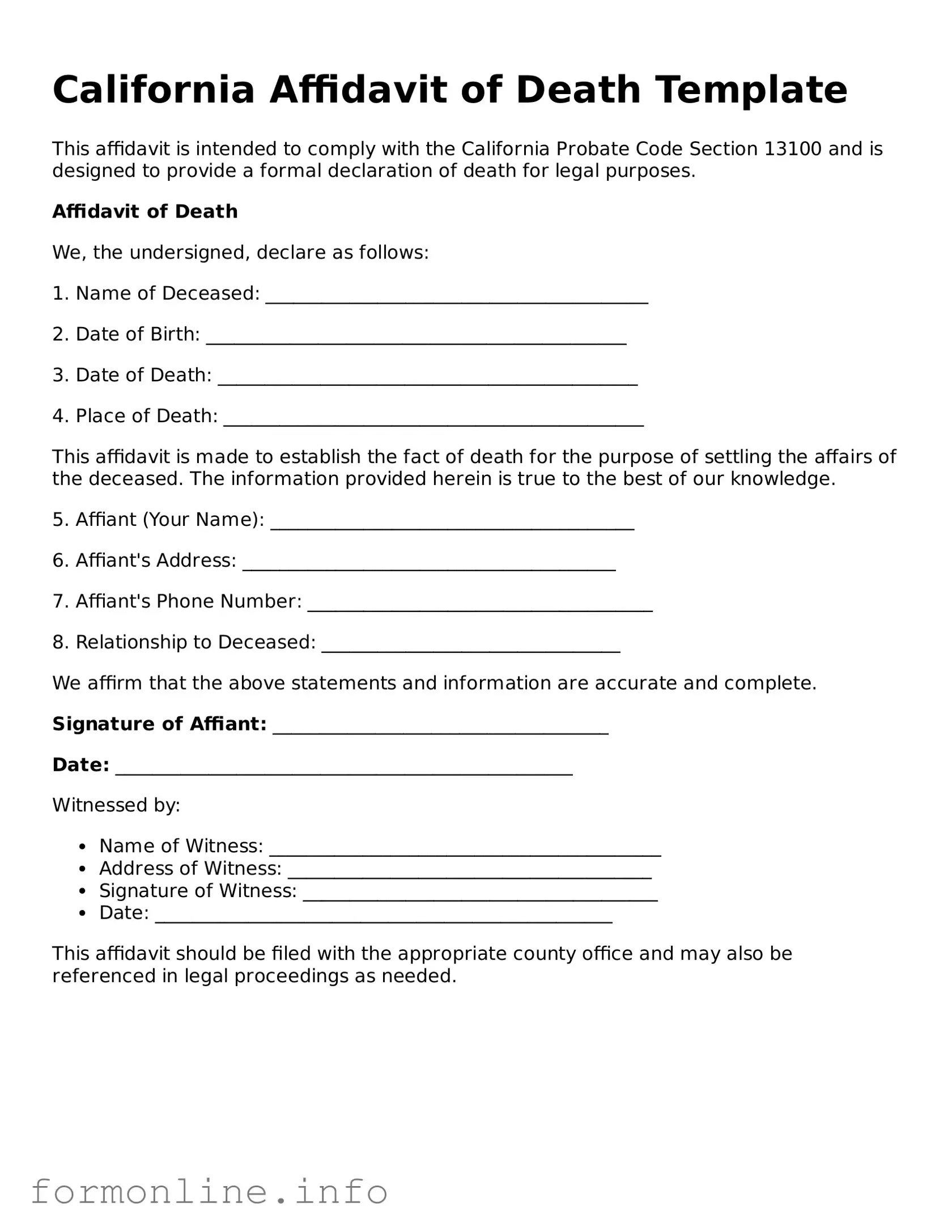California Affidavit of Death Template
This affidavit is intended to comply with the California Probate Code Section 13100 and is designed to provide a formal declaration of death for legal purposes.
Affidavit of Death
We, the undersigned, declare as follows:
1. Name of Deceased: _________________________________________
2. Date of Birth: _____________________________________________
3. Date of Death: _____________________________________________
4. Place of Death: _____________________________________________
This affidavit is made to establish the fact of death for the purpose of settling the affairs of the deceased. The information provided herein is true to the best of our knowledge.
5. Affiant (Your Name): _______________________________________
6. Affiant's Address: ________________________________________
7. Affiant's Phone Number: _____________________________________
8. Relationship to Deceased: ________________________________
We affirm that the above statements and information are accurate and complete.
Signature of Affiant: ____________________________________
Date: _________________________________________________
Witnessed by:
- Name of Witness: __________________________________________
- Address of Witness: _______________________________________
- Signature of Witness: ______________________________________
- Date: _________________________________________________
This affidavit should be filed with the appropriate county office and may also be referenced in legal proceedings as needed.
